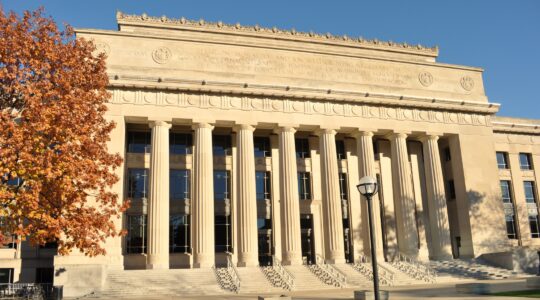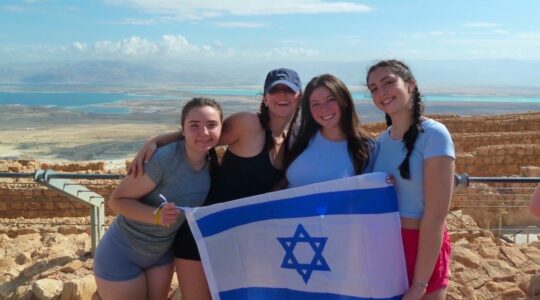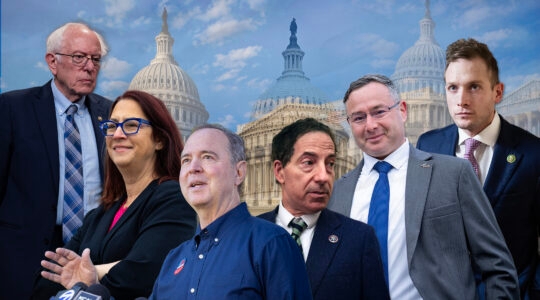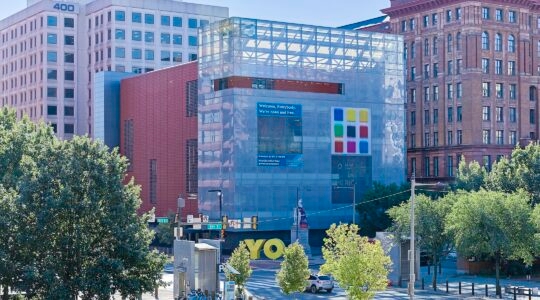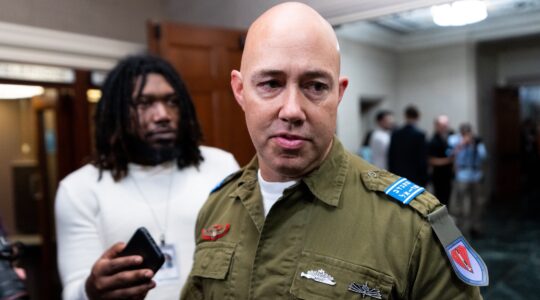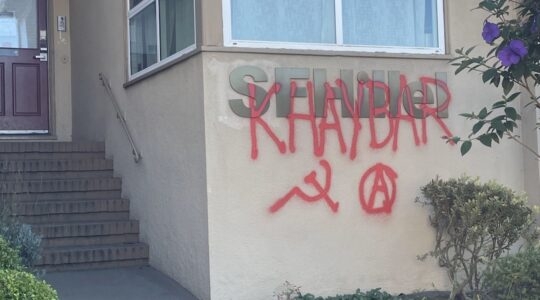NEW YORK (JTA) – If you creatively advertise it, it is not a dream.
This would seem to be the lesson from the Israel@60 festival on the National Mall. Oragnizers of the June 1 event, sponsored by the Jewish Federation of Greater Washington, were expecting a few thousand participants. In the end, they say, between 50,000 and 75,000 turned out.
Some of those involved in the planning are attributing the turnout to what’s known in advertising circles as “guerrilla marketing” – a relatively inexpensive, fairly creative approach to promoting an event.
Since the federation did not have room in its budget to take out ads in The Washington Post and other more expensive venues, its marketing department – working in tandem with Rabinowitz/Dorf Communications – relied on more creative and dynamic approaches, such as stenciling washable chalk on the sidewalk in front of several popular venues, as well as an earlier event organized by the Israeli embassy. They also put ads on Facebook, Google, Washington Gazette newspaper bags, at local grocery stores and in grocery bags before Passover. Robo phone calls were also used to promote the event, which attracted a diverse crowd, including members of many organizations, affiliated and non-affiliated Jews, Israelis and non-Jews of all ages, according to event organizers.
Federation officials declined to say how much was spent on advertising, but a source familiar with the situation said it was less than $50,000.
A non-political gathering with entertainment and education suited to each demographic, the festival was the “capstone event if the year’s Israel@60 programming,” said Stuart Brown, co-chair of Israel@60 for the Greater Washington area. The other co-chairs were Dede Feinberg and Norman Goldstein.
The event, Brown said, was intended to achieve three goals: to bring the whole community together, to strengthen the connection between the Washington community and Israel and to showcase the accomplishments of Israel that are important in people’s daily lives.
There were ten pavilions with activities, including Come Make Your Mark on Our Gigantic Globe, Tour the Land, Democracy and Government, and the Israeli Dance Pavilion, each sponsored by a different organization. There was also a “Henna Montana” booth, an interactive wax museum and educational booths on Israel’s economic relations and healthcare.
The fact that it was a celebration, and not a rally or march, made the event a “unique new model for Israel hasbara,” Myra Clark-Siegel, a senior associate at Rabinowitz/Dorf, said. “It really pulled back the curtain to show people what everyday life is about across Israeli society.”
In order to attract different groups, organizers booked performers geared toward differing demographics. Singer Regina Spektor, who sings on the Chronicles of Narnia soundtrack and has a large following of 20-somethings, performed at the event. Before the performance, Google searches for the artist, narrowed by geography, generated ads for her concert at the Israel festival.
The ads were also used to advertise the performances of the Israeli rock band Mashina, Tony and Emmy award-winner Mandy Patinkin and the Muppets.
Additionally, Sallai Meridor, the Israeli ambassador to the United States, recorded a message about the event, which was communicated through robo calls to thousands of people, creating a “final thrust of excitement right before the event,” Clark-Siegel said. The various advertising efforts, she added, had a “layering effect” and “built on each other.”
The marketing campaign began by “creating a buzz” before Purim, with the appointment of “ambassadors” to particular organizations and congregations, and the distribution of program materials and flyers.
Then, before Passover, the campaign was able to reach those who are unaffiliated yet still attend seders. The advertisers went to kosher and regular supermarkets with high traffic and put up flyers and signs. Flyers were also put into shopping bags and catering orders at kosher caterers and grocery stores.
The event was publicized online to people across the age spectrum. Teenagers and college students saw ads for the event when they signed onto Facebook, and a Facebook group – Israel@60: A Capital Celebration – was created, ultimately attracting nearly 700 members.
The event was also advertised through DC Urban Moms, which is a “huge Web site for moms in D.C.,” according to Clark-Siegel.
At 5:30 a.m., on the day of the event, Israeli food platters were delivered to the top radio stations in the area. Along with pita and baba ghanoush came fliers with blurbs about the festival at the National Mall, and asking the DJs to announce it. The event ended up getting plugged on stations ranging from pop and hard rock to oldies; talk-radio station WTOP – the top station in the city – plugged the festival on “the eights,” during traffic and weather reports.
JTA has documented Jewish history in real-time for over a century. Keep our journalism strong by joining us in supporting independent, award-winning reporting.
